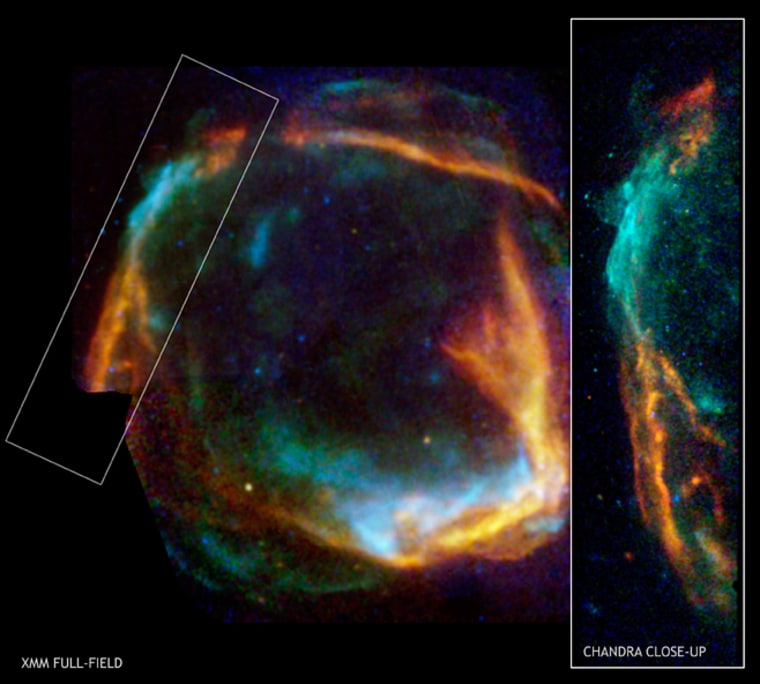Nearly 2,000 years ago, Chinese astronomers spotted a bright light materializing in the night sky. Turns out the skywatchers had witnessed the spectacular explosion of a dying star.
That was the year 185 AD. Today astronomers said they might have identified the remains from this ancient stellar explosion, now considered the oldest supernova on record.
“I think it is very interesting that we can now say with some confidence, but not absolute certainty, that RCW 86 is the remnant of AD 185,” said Jacco Vink of the University of Utrecht, the Netherlands.
In the Astrological Annals of the Houhanshu, Chinese astronomers noted the bright light in the sky twinkled like a star but didn’t appear to move, arguing against the object being a comet. Within eight months, they recorded, the bright light faded, a phenomenon that astronomers now know is consistent with supernovas.
When a star that’s more than eight times the mass of our sun burns out, gravity’s inward tug tears apart the star’s innards. It collapses and then rebounds. Called a supernova, the explosion propels jets of high-energy light and matter out into space. The hurling remains and the material they encounter are heated to millions of degrees and can emit intense X-ray radiation for thousands of years.
Astronomers had suggested the stellar material called RCW 86 could be leftovers from the 185 AD supernova, based on historical records of the object’s position in the sky. But previous work estimated the object was 10,000 years old, which led to doubts about the link.
Astronomers led by Vink studied the material in RCW 86 to determine when its progenitor star originally exploded within the Southern Hemisphere constellation Centaurus. To do this, they used the X-ray capabilities of NASA’s Chandra X-ray Observatory and the European Space Agency’s XMM-Newton Observatory.
RCW 86 is encased in an expanding shock wave formed during its transit from the original explosion. By peering into one part of RCW 86, the astronomers calculated how fast this cosmic bubble was moving. So with the size and speed of RCW 86, the astronomers could calculate the time of the explosion, and hence the remnant’s age.
Slideshow 12 photos
Month in Space: January 2014
“Our new calculations tell us the remnant is about 2,000 years old,” said Aya Bamba, a co-author from the Institute of Physical and Chemical Researcher in Japan.
The new age estimate matches the supernova spotted in 185 AD. But this calculation means the remnant is 8,000 years younger than previously thought. The astronomers said the difference can be attributed to the irregular shape of the remnant’s expanding bubble. Stellar wind from the progenitor star pushed some of the remnant’s gases in a certain direction, forming a dense pile. “The idea for RCW 86 is that in some regions the shock has hit this piled-up material. In those regions the shock will start moving slower,” Vink said. And in other regions, the shock wave is much speedier.
“This could explain the earlier measurements for lower shock velocities,” Vink told SPACE.com. The previous speeds were used to calculate RCW 86’s age.
With more information on RCW 86, Vink said he could now probe the original supernova to learn what type of star exploded and how much energy was involved in the stellar fireworks.
The research is detailed in the Sept. 1 issue of The Astrophysical Journal Letters.

